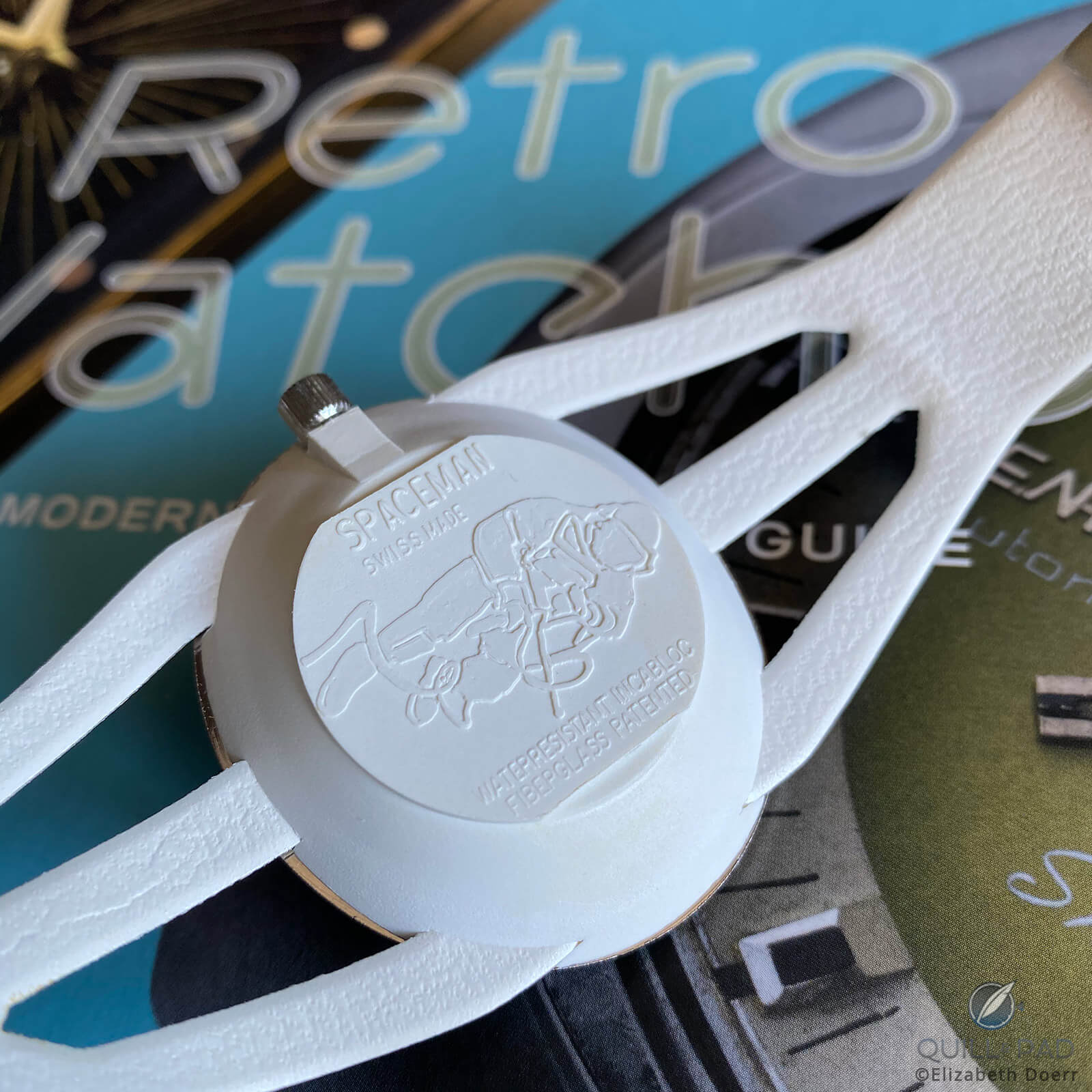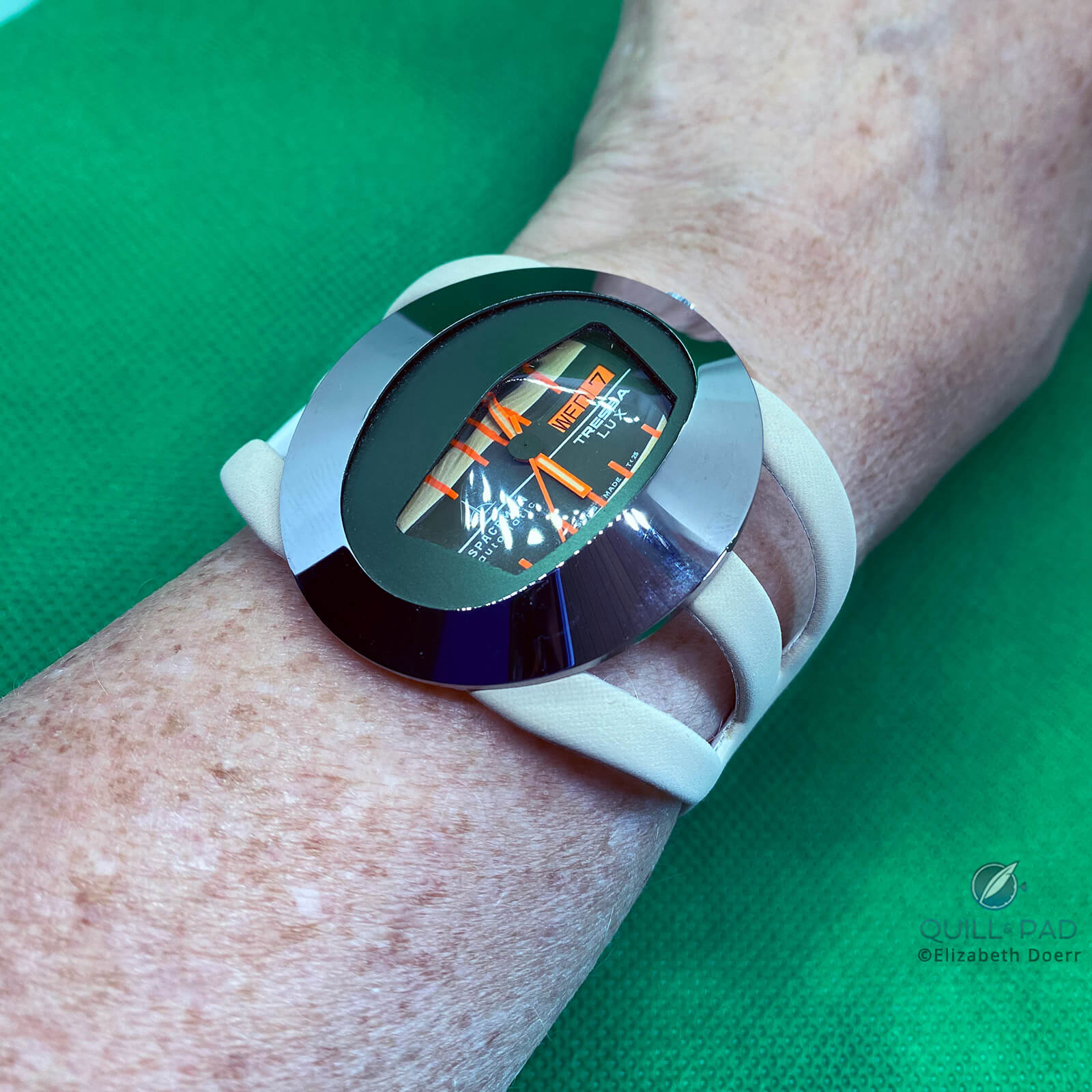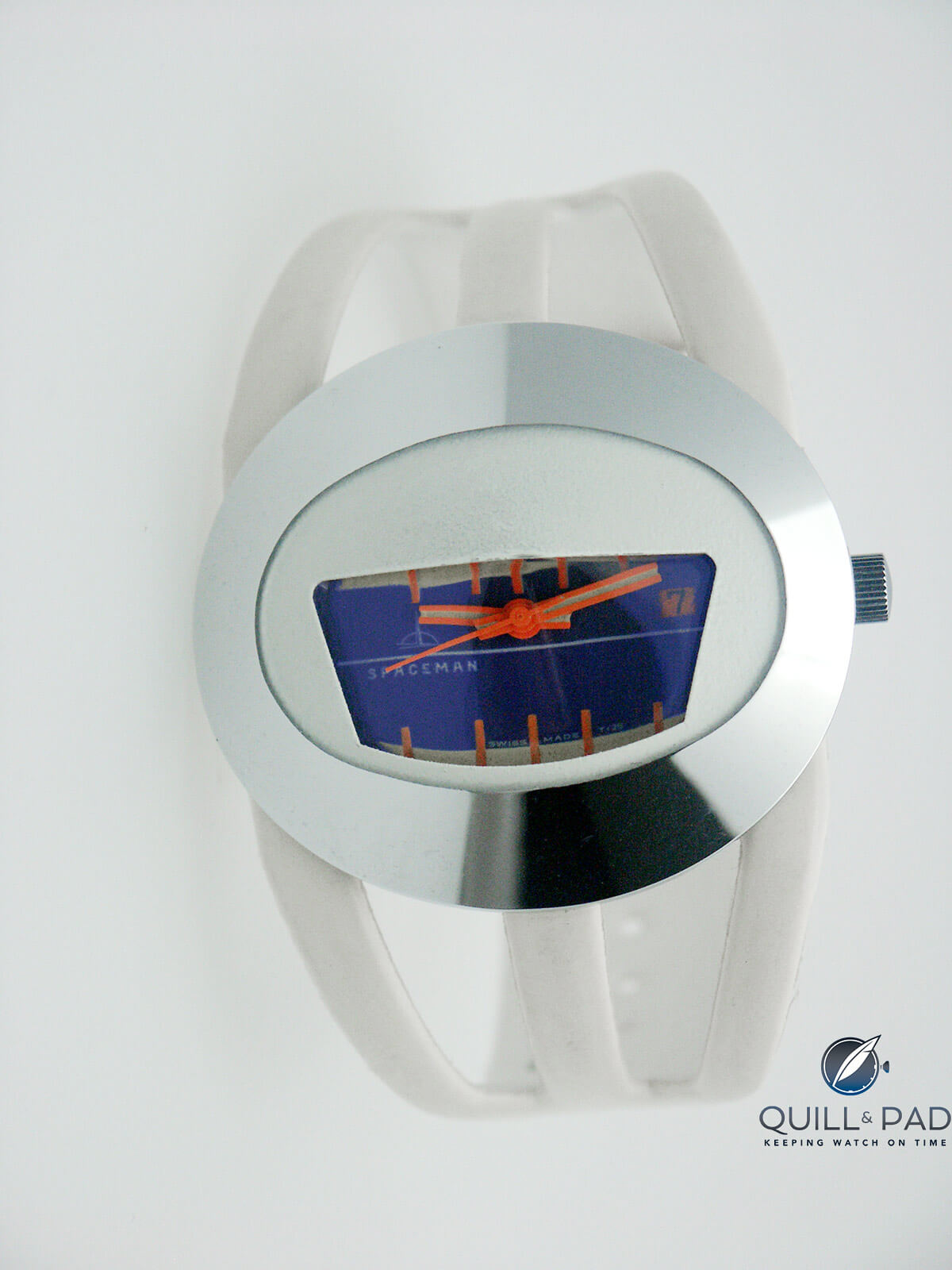Credits: Article and images by Elizabeth Doerr @ Quill & Pad. See the original article here - https://quillandpad.com/2023/07/02/meet-the-spaceman-a-popular-fashion-watch-of-the-1960s-and-1970s-that-was-almost-forgotten-in-a-drawer-reprise/
—————————————————————————————
What is the Spaceman?
The Spaceman has been on display at New York’s Museum of Modern Art as well as the renowned MIH watch and clock museum of La Chaux-de-Fonds.
What makes this watch so special is the mix of different elements that had until then not been seen together. Quartz watches had not yet taken over, and today it seems almost indecent to put an automatic movement into a fiberglass and chrome case. However, Le Marquand dared to dream and Huber had the wherewithal to make it into reality.


Back of the fiberglass Catena/Zeno Spaceman
The Spaceman’s blend of ovals, curves, and straight lines was just right, touching a nerve in a hip watch-buying public. It was a polarizing watch: people generally either hated it or loved it at first sight.
Its Hesalite crystal, semi-conical and domed, is partially covered by a piece of colored metal, matching the hue of the dial and serving two functions.
First, it covers a part of the dial, leaving only the vital displays visible. Second, combined with the crystal itself, it quickly and easily reminds one of an astronaut’s helmet. This is surrounded by an oval piece of shiny chrome-plated brass, forming a type of bezel and framing the watch.
The entire watch is housed in a pod-like case of white fiberglass, a revolutionary material in 1969, and can be seen from the sides as it stands up on the wrist, leaving the impression that the entire timepiece is the shape of a flying saucer.


Spaceman on the wrist
The case measures 50 x 42 mm and is 18 mm in height, but despite that it is a comfortable fit – even on my very small wrist.
The strap is a triple-split Corfam band (a trademarked, synthetic, microporous material by DuPont used as a leather substitute) stamped with the word “Spaceman” on the underside. Its color matches that of the dial and the helmet piece.
The dial shows the time with bright-orange hands, and some models (like the one shown here) displayed the day and the date. Depending on the edition, these displays are powered by an AS 2063, 2066, 1913, 1916, or 5206, or, less frequently, an FHF 96 or 96/4.
AS (Alfred Schild) and FHF (Fabrique d’Horlogerie de Fontainemelon) were taken over by Ebauches SA in 1978, which later became ETA. Neither AS nor FHF movements are in production any longer.
The original oval Spaceman, which was available in six different colors, was followed by the audacious Spaceman Audacieuse in 1974 and the Spaceman Carré in 1977, both of which were also designed by Le Marquand.
The Audacieuse is rectangular and features a chromium-plated steel bracelet or a leather strap, which may have been lacquered. The third series was introduced in 1977 and had a digital mechanical movement. A fourth series, appearing in the same year, comprised two LCD timepieces. The popularity of these sequels, however, never reached that of the original oval timepiece.


Catena/Zeno Spaceman (photo courtesy Zeno Watch)
The 40,000 original oval Spacemen were sold in Switzerland as of 1969 by Huber for 196 Swiss francs (according to today’s exchange rate, between $150 and $200). Many, many, many editions followed, specially manufactured for distributors in various countries such as Australia, Saudi Arabia, Kuwait, Italy, the U.S.A., and the United Arab Emirates.
Peter Doensen, author of the book Watch, wrote that a total of 150,000 Spacemen were sold by 1982. Between 1985 and 1995, Huber sold about 15,000 more pieces to new-old stock dealers.
Some of these are still floating around the internet, although they are now harder to get. But if you’re lucky, you might be able to purchase one for about $200-$300.
I’m lucky: I have already secured mine.
Author’s note: There are conflicting dates of Spaceman manufacture on the internet, which often show an introduction date of 1972. I have my information directly from Felix Huber; it is possible that the information on the internet comes from one correct or incorrect source that has been perpetuated. Either way, I cannot verify one over the other as being gospel so I present the facts as I have them. The Spaceman was manufactured and/or distributed by a range of different Swiss brands; this is correct (and usual for the time). And it is possible that the 1972 date emanates from one of these other manufacturers. It is also possible that the Spaceman did not reach the Basel Fair until 1972, which would also be a plausible explanation. The design was registered in 1969 in the USA and 1970 in Switzerland, verifiable on the patents.
* This article was first published 13 June 2020 at Meet The Spaceman: A Popular Fashion Watch Of the 1960s And 1970s That Was Almost Forgotten In A Drawer
You may also enjoy:
Vintage Eberhard & Co. Les Quantièmes: A Complete Calendar At A (Relatively) Affordable Price
Ikepod Megapode: Marc Newson’s Smartest Watch (And Perhaps My Smartest Rolex Trade)
Fauxtina: A Faux Vintage Faux Pas
Credits: Article and images by Elizabeth Doerr @ Quill & Pad. See the original article here - https://quillandpad.com/2023/07/02/meet-the-spaceman-a-popular-fashion-watch-of-the-1960s-and-1970s-that-was-almost-forgotten-in-a-drawer-reprise/











